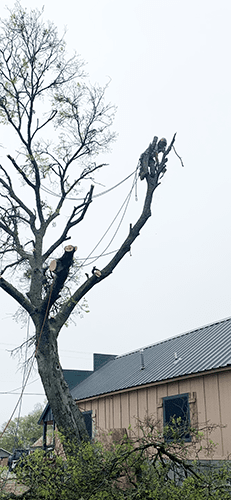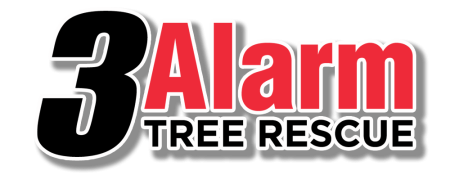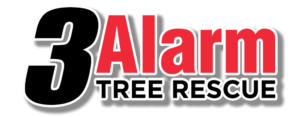Trimming and Pruning

Maintenance Pruning is needed when trees and tree branches are too close to houses, drooping over parking areas or walkways, and to take care of any damaged areas, or other areas of concern, regarding the tree. This type of pruning is usually performed as needed every two to three years.
Interior Trimming is often done to emphasize the structure of the tree itself. This entails removing some of the small growth and small branches that obscure the view of the central trunk and main branches of the tree from below. It makes the tree appear very neat and clean while showing the tree’s strength and impressive structure. Live oak trees are often trimmed in this way. This type of trimming requires care, because if trimmed to excess, the tree will suffer.
Crown Raise is the easiest way to trim a tree. The goal of this type of trimming is to cause the tree to grow taller and keep the crown at the top of the tree. As the tree matures, you will have a tall, straight trunk with no lower branches. However, this type of tree is not recommended for trees close to houses because a tall tree with its crown at the very top, is susceptible to being blown down by the wind.
When to Prune
Trees have unique criteria to be considered when pruning. It is important to identify the species of the tree before pruning. General seasonal temps about tree trimming are:
- Spring: Flowering trees should be trimmed soon after the blossoms fall
- Summer: Minimize pruning during the summer except for pruning out dead branches and wood
- Fall: Take out dead wood and small, live growth is okay
- Winter: Best opportunity to trim most trees, especially if you need to make large cuts
How to Prune
Professional tree trimming companies comply with the national tree pruning specification, the American Standards Institute ANSI A300 for Pruning. If your Arborist complies with the ANSI A300, you can be assured that you and he will comply with all local tree ordinances. If not done properly, pruning can damage and even kill your tree. As a rule, smaller cuts made more frequently are better than larger cuts made infrequently. The ANSI A300 covers where on the branch to make the cut, as well as how much of the tree to cut. It also prohibits the tree trimmer from the use of climbing spikes.
Regular Tree Maintenance Guidelines
- Remove branches that are dying or already dead. Branches that are crossing over each other, or branches with obvious defects, like cracks or fungus, can also be removed.
- Make the cuts close to the trunk or parent stem, but you should not cut into the collar of growth that connects the trunk to the limb. The ideal cut leaves no protruding stub, yet it isn’t completely flush with the trunk. Leaving a little of the collar growth will allow the cut to heal over more quickly.
- Cuts should be made as smoothly as possible without cutting or tearing the bark, or allowing it to peel down the trunk.
- If the end of a limb is to be trimmed, it should be cut back to a leader of suitable size. This allows the trimmed limb to heal over because there is already a lot of growth present at the point of healing. The remaining leader should be at least a third the diameter of the pruned stem.
- Climbing spikes aren’t healthy for trees and should only be used in an emergency situation.
- Anytime vines have invaded a tree, they should be cut at the base of the tree and allowed to die. Vines will eventually take over the canopy of a tree and kill it. They also do damage to the bark.
- Try never to nail things into a trees. As the tree grows, it will grow over almost anything that is attached to it. The bark of the tree will grow around foreign objects. When a tree is trimmed, you should pull off anything that is attached unless it is being used for an important purpose.




